Dusting is a never-ending chore, but it’s essential to keep your living space clean and dust-free. While traditional methods of dusting can be time-consuming, there are various genius dusting hacks that actually work and can make the process much more efficient. These ingenious techniques not only save time but also make it easier to reach all those nooks and crannies where dust tends to accumulate.
While there is no such thing as a dust-free home, these dusting hacks that actually work will help you find the places where dust accumulates, eliminate all of the dust bunnies, and keep a much healthier home.
What Are The Best Dusting Hacks
Some of the best DIY dusters are:
- Old socks
- Dryer sheets
- Lint rollers
- Paint Brushes
- Tongs
From using lint rollers to dry mops, these dusting hacks are designed to keep your home clean from all the dust, without the need for excessive elbow grease. Knowing these dusting hacks that actually work can simplify your cleaning routine, providing a greater sense of satisfaction in maintaining a dust-free environment.
As you incorporate these dusting tips into your cleaning regimen, you may be surprised by just how much easier and more enjoyable (maybe not enjoyable, but definitely easier) the task of dusting becomes. In turn, it makes all of your house cleaning work more smoothly and you become more motivated to keep it up.
Keep reading for my best dusting hacks to help make your job easier!
I have to admit that keeping my house dust free is not one of my favorite things to do. I would rather do anything than clean dust. But it has to be done, nobody wants a dusty house!
Below I will share my favorite dusting hacks with you that made my life easier and I know they will make your life easier too, and help you to get rid of dust in your home.
*This post contains affiliate links. Full disclosure here.


Basic Dusting Tips
Microfiber Cloths
Microfiber cloths are a must-have for effective dusting. A microfiber cloth is made from ultra-fine fibers that attract and hold dust particles, making them perfect for dusting surfaces like furniture and electronics. A damp microfiber cloth works great, but should be washed after each use.
I have several microfiber cloths that help me to eliminate dust in my home.
Vacuum Attachments
Using the appropriate attachments on your vacuum cleaner can make dusting a breeze. For example, a soft bristle brush attachment is excellent for dusting delicate items and hard-to-reach areas, such as lampshades, window blinds, and baseboards. A crevice tool is useful for getting into tight corners or spaces between cushions. Remember to adjust the vacuum’s suction power for delicate surfaces.
Swiffers
A Swiffer duster is another great tool for removing dust from your home. With disposable, fluffy dusting cloths that attach to a long handle, Swiffers can quickly and easily grab dust from surfaces like floors, shelves, and ceiling fans. They come in various sizes, including a compact version for small spaces or a larger one for tackling bigger areas. It is always a good idea to replace the duster cloths regularly.
I use these and I set up a subscribe and save on Amazon so I never run out for my swiffer sweeper.
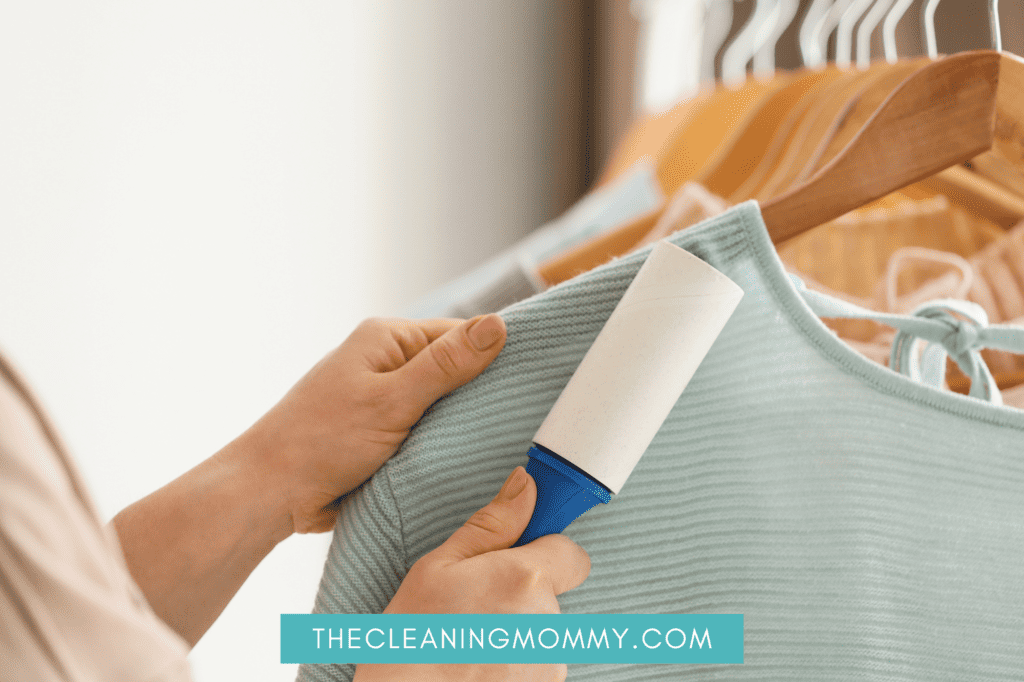
Lint Rollers
Lint rollers make great dusters. For oddly shaped items like lamps and lamp shades, or soft-sided delicate items like throw pillows, just use a lint roller. You simply roll the tool over the surface and watch it pick up all the dust. Once a sheet gets covered in dust, just pull it off to reveal another.
Cleaning Specific Items
Blinds and Window Treatments
Cleaning blinds or plantation shutters can be quite challenging as they continually attract dust and are difficult to clean. But with the right technique, you can easily get the job done.
One creative hack is to use tongs wrapped in microfiber cloth with elastic bands to hold them in place. This simple method allows you to easily grip the blinds and dust both sides at once. For window treatments, gently use a vacuum cleaner with a brush attachment or a lint roller to remove dust and debris.
Electronics and Keyboards
Dust and dirt can easily accumulate on electronics and keyboards, impacting their performance. To effectively clean these items, first turn off and unplug the devices. Then, use compressed air to blow out dust from the crevices of your keyboard, and gently wipe the surface with a microfiber cloth. For electronics like TVs and computer monitors, make sure to only use screen-specific cleaners and lint-free cloths.
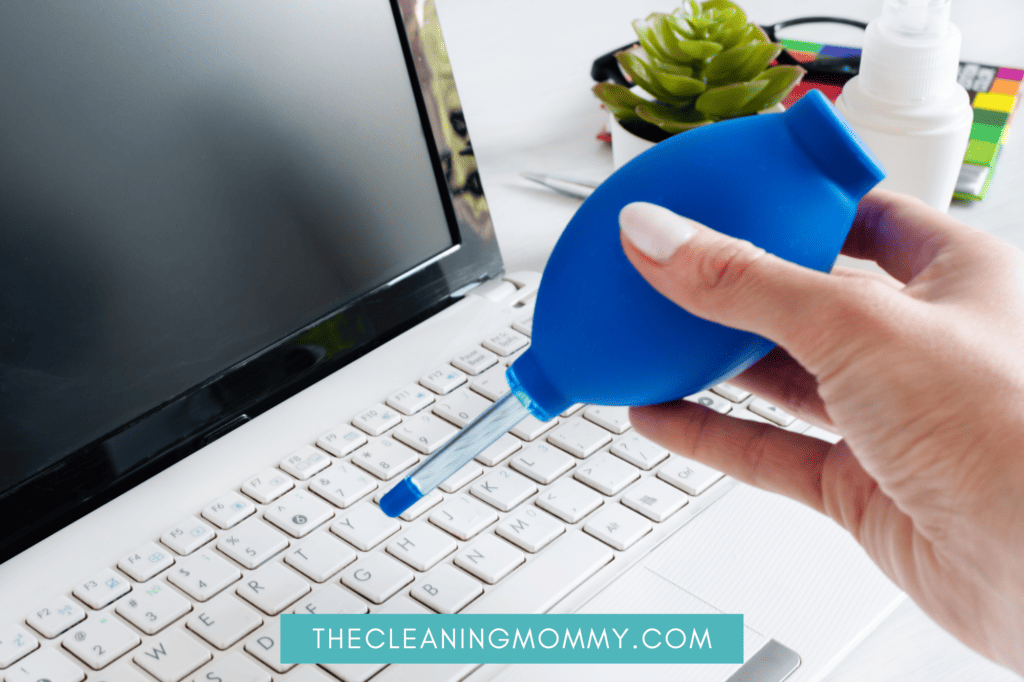
Ceiling Fans and Light Fixtures
Keeping ceiling fans and light fixtures clean is essential for maintaining good air quality in your home. Let me share my favorite way for cleaning ceiling fans.
A pillow case! I like to use an old one, but you will be washing it, so I wouldn’t worry too much. You will need a step stool anyway. Slide the pillowcase over each fan blade one at a time. Then press the pillowcase against the top and bottom of each blade and slide it towards you. You’re basically pulling all the dust towards you. All the excessive dust stays in in the pillowcase, I then take it outside, and shake it out, and now it’s ready for the washer! It’s genius!
You can also try this way, if you’re not comfortable on a step stool
To dust ceiling fans, use a dry mop or an extendable dusting tool to reach each fan blade and housing. Light fixtures can be cleaned by first turning off the power, then carefully removing the covers, and washing them in warm soapy water.
Upholstered Furniture and Fabrics
There are several ways to clean these fabrics. The first way would be to use a vacuum. If you have an upholstery attachment, use it on the sofa or soft chairs. As I mentioned earlier, a lint roller works well on soft fabrics and oddly shaped items. As a last resort, you can use a steam cleaner to deep clean the upholstered items. This will ensure the removal of most if not all ground in dust and dirt.
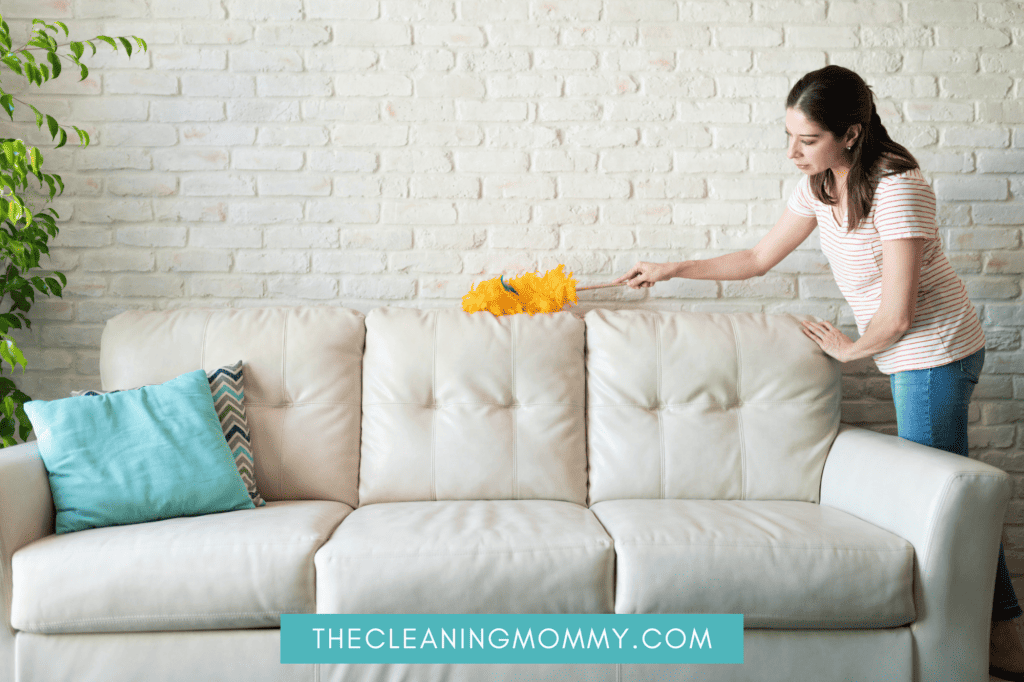
Natural and DIY Dusting Solutions
Vinegar and Lemon
Vinegar and lemon are 2 of my favorite all-natural DIY cleaning supplies. They do a great job on all kinds of dust, dirt, and grime and are powerful in many household cleaning applications. Simply mix equal parts of and white vinegar and add a squeeze of lemon juice to cut the vinegar smell, and add a fresh scent. This mixture can be put in a spray bottle and spritzed on most surfaces safely. If you do not have lemon juice or a lemon, a couple of drops of lemon essential oil may be used as well.
Baking Soda
Baking soda is another natural and effective dusting agent. It has a gentle abrasive quality, making it perfect for lifting dust from surfaces without scratching them. To create a baking soda cleaning solution, mix a few tablespoons of baking soda with enough water to form a thick paste. Apply the paste on surfaces like stovetops, sinks, or other appliances with stubborn grime, and gently scrub using a sponge or cloth. Rinse with water and wipe dry.
Essential Oils
Essential oils not only add a pleasant scent to your cleaning solutions but also contain antimicrobial properties. For instance, adding a few drops of lavender, tea tree, or eucalyptus essential oil to your vinegar cleaning solution can enhance its cleaning power and leave your home smelling fresh.
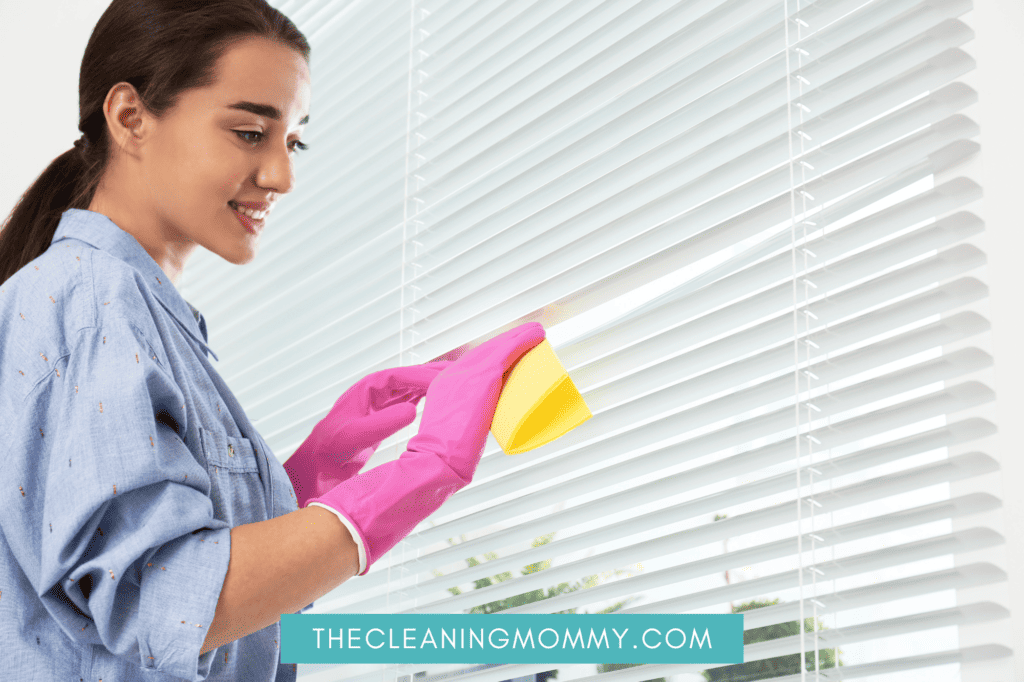
DIY Dusting Sprays
You can easily make a homemade dusting spray using natural ingredients like water, vinegar, and essential oils. One DIY dusting solution involves mixing two cups of water, a few drops of dish soap, some vinegar, olive oil, and 20 drops of your favorite citrus essential oil in a spray bottle. This mixture is effective in removing dust and providing a streak-free finish on surfaces.
When using any of these natural and DIY dusting solutions, always test on a small, inconspicuous area first to ensure compatibility with the surface. Happy cleaning!
Genius Dusting Hacks That Actually Work
Pillowcases and Socks
A pillowcase can be used to clean ceiling fan blades with ease. Simply slide the pillowcase over each blade, then pull it back while holding the end. This way, the dust will be collected inside the pillowcase rather than scattering all over the floor. Socks can be repurposed as reusable dusting gloves. Slip a sock over your hand and dampen it slightly, then use it to wipe down surfaces like furniture and electronics.
Paint Brushes and Rubber Gloves
Paint brushes can be excellent tools for cleaning hard-to-reach areas that are really good at collecting dust, such as keyboards, grates, and intricate decorations. They can easily remove dust from nooks and crannies, making your cleaning experience more efficient.
Picking up pet hair used to be such a chore, but now all you need to do is use some rubber gloves. Rubber gloves, on the other hand, can help pick up pet hair from furniture surfaces. Simply dampen the gloves and run your hand over the affected area. The hair will stick to the gloves, making it much easier to dispose of.
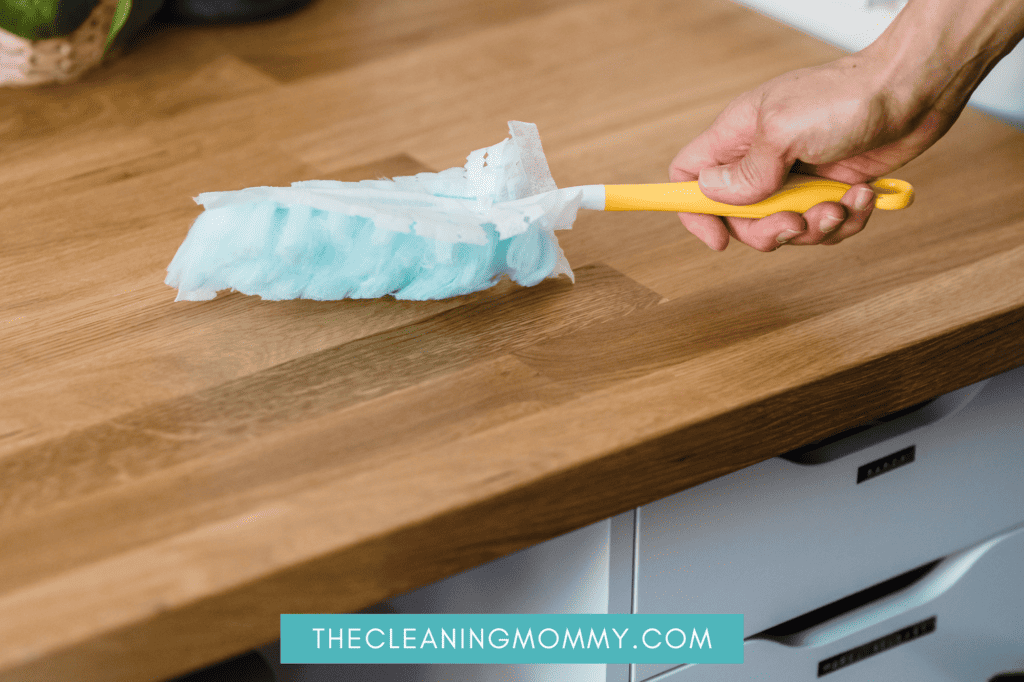
Tongs and Rulers
Tongs wrapped with microfiber cloths can be used to clean tight spaces like blinds and air vents with ease. To do this, simply wrap a microfiber cloth around each side of a pair of tongs, securing it with a rubber band. Then, clamp the covered tongs onto each blind or vent slot and slide them along to remove accumulated dust. This is a great dusting hack. Rulers can also be used as cleaning devices. Just wrap a lint roller sheet or a microfiber cloth around a ruler and use it to reach narrow spaces like under appliances or behind furniture.
Fuzzy Socks and Dusting Slippers
Fuzzy socks have many uses beyond keeping your feet warm. Slip a clean fuzzy sock over your hand and use it as a dusting mitt, running your hand over surfaces to collect dust. Alternatively, you can wear dusting slippers around the house, which are specially designed with microfiber pads on the bottom. As you walk around your home, the slippers will effortlessly pick up dust and debris from your floor, keeping it clean without extra effort.
Seriously, give it a try, this is one of my favorite cleaning hacks – anything for an easy life.
Dryer Sheets
If all else fails, dryer sheets make great dusters. They cling to dust and leave behind in nice scent. A dryer sheet will pick up all the dirt that a feather duster will and all that dust can be simply thrown away.
Hairdryer
Did you know that a hair dryer is perfect for removing dust from your house plants? Set your hair dryer to a cool setting and get ready for some easy dusting.
Canned Air
Canned air works really well when it comes to cleaning your exhaust fans.
Coffee Filter
Coffee filters are perfect for easy dusting hacks, like cleaning your tv screen, the dashboard in your car, and they work great for cleaning your glasses.
Rubbing Alcohol
This is an easy dusting hack, use rubbing alcohol to clean dust off lightbulbs. Make sure that your lightbulb is cold before you attempt this. Use a microfiber cloth and some rubbing alcohol and you will remove dust from your lightbulbs in no time.

Strategies to Reduce Dust in Your Home
Decluttering and Proper Organization
Decluttering your home is an effective way to reduce dust, as fewer objects will gather and hold onto dust particles. Begin by sorting through your belongings and removing items you no longer need. Additionally, properly organize your remaining items to minimize dust accumulation. Closed storage options like cabinets and boxes can help keep dust away from objects. Be sure to regularly dust and clean exposed surfaces to further prevent dust buildup.
If you like having lots of knick knacks around, you just need to know that they will attract dust and so you will have to dust more often. Using the genius cleaning hacks I have provided you with, will help to rid your house of dust bunnies much easier.
Proper Vacuuming and Carpet Maintenance
Carpets trap and hold a significant amount of dust, making proper maintenance crucial in reducing dust levels in your home. Regular vacuuming with a HEPA filter can help remove up to 99.97% of dust, pollen, mold, and bacteria. It’s essential to use appropriate vacuum cleaner attachments for cleaning upholstery, drapes, and hard-to-reach areas. In addition to vacuuming, deep clean your carpets periodically to remove embedded dirt and dust.
Air Purifiers and Indoor Plants
Air purifiers with true HEPA filters can effectively trap dust and allergens, improving air quality in your home. Consider investing in an air purifier for rooms where you spend the most time. Indoor plants can also act as natural air purifiers, absorbing harmful substances and producing fresh oxygen. Some popular indoor plants known for their air-purifying properties include spider plants, snake plants, and peace lilies.
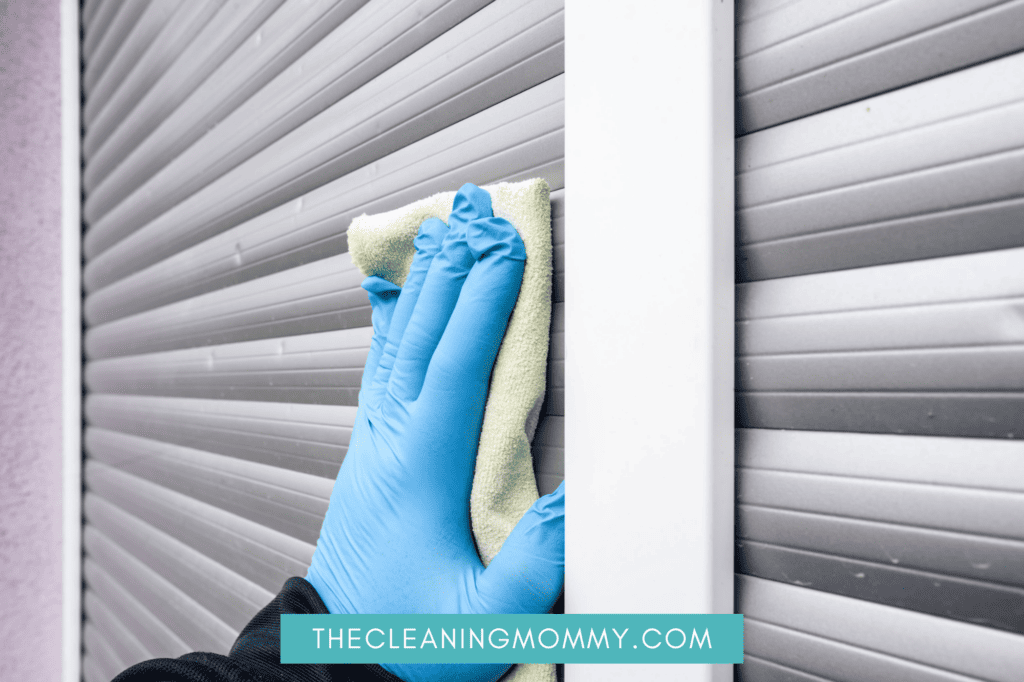
Doormats and HVAC Systems
Doormats play a significant role in reducing dust brought into your home from outside. Place doormats at all entrances to your home and encourage family members to wipe their shoes before entering. Washing or vacuuming doormats regularly will also help minimize the amount of dust tracked inside.
Proper maintenance of your heating, ventilation, and air conditioning (HVAC) system is essential for keeping your home dust-free. Regularly replace or clean the air filter to ensure optimal performance and improved air quality. Additionally, have your HVAC system professionally inspected and serviced annually to maintain efficiency and reduce dust circulation throughout your home.
Managing Dust Allergies and Health
Pet Grooming and Hair Removal
Regular pet grooming helps to manage allergies and maintain air quality in your home. Brushing your pets outdoors can minimize the amount of hair and dander that accumulates indoors, reducing potential triggers for allergies and asthma. Additionally, frequently washing pet bedding and cleaning surfaces can further mitigate the impact of pet hair and dander on your home environment.
High-Quality Air Filters
Investing in high-quality air filters is essential for improving air quality and reducing allergens. HEPA filters, in particular, are highly effective in capturing small particles like dust mites, pollen, and pet dander. Ensure that air filters are replaced or cleaned regularly to maintain their effectiveness at filtering out allergens and maintaining a healthy home environment.

Controlling Humidity
High humidity can contribute to the growth of dust mites, mold, and other allergens. Maintaining a relative humidity of around 30-50% can help to reduce these allergens in your home. Using dehumidifiers, exhaust fans in bathrooms, and air conditioners can assist in controlling humidity levels and improving air quality. Additionally, avoid over-watering indoor plants and address any sources of water leaks, as these can contribute to excess moisture and promote allergen growth.
Dealing with Dust Mite Allergies
Dust mites are a common source of allergies, and controlling their presence is crucial for individuals with dust mite allergies. A multi-step approach can help in reducing dust mite populations:
- Wash bed linens, blankets, and pillowcases weekly in hot water (at least 130 F) to kill dust mites and remove their allergens. Dust mites feed on dead skin cells, so the bed and bedroom are popular hangouts for them.
- Use tightly-woven allergen-proof covers on mattresses, pillows, and box springs to create a barrier between you and dust mites.
- Replace carpets with hard surface flooring or use low-pile carpets if possible. Regularly vacuum, mop, and dust floors to minimize dust and dust mite accumulation.
- Avoid excessive use of stuffed toys or washable stuffed animals on beds, as they can harbor allergens.
- Regularly clean and dust your home, using damp cloths or microfiber tools to capture dust, rather than just spreading it around.
By following these strategies, you can better manage dust allergies and create a healthier living environment for you and your family.
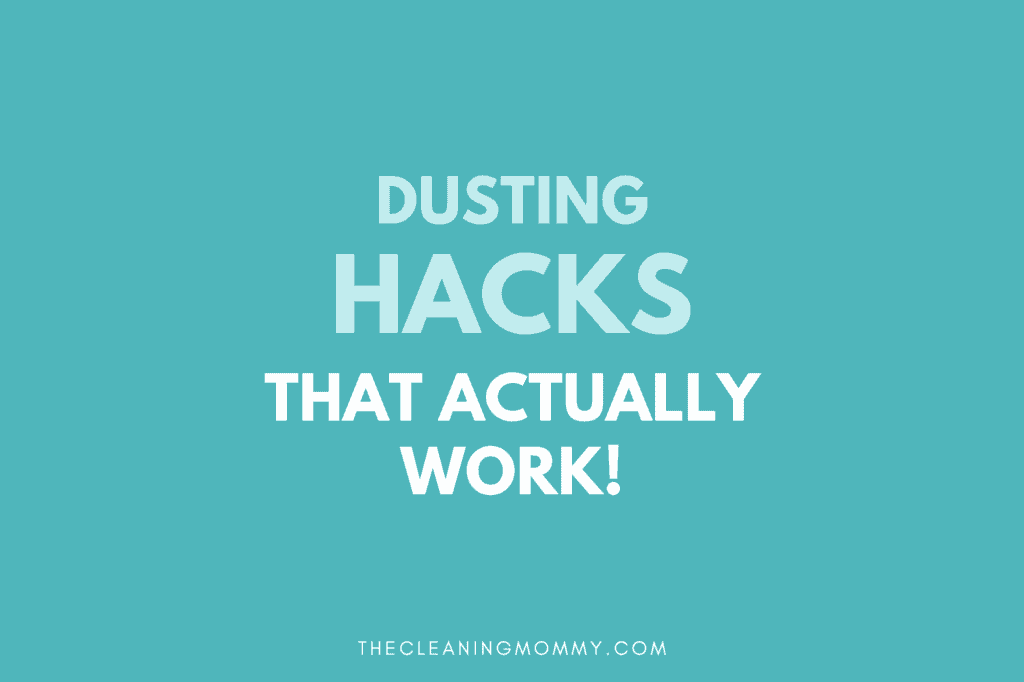
Conclusion
Maintaining a Dust-Free Lifestyle
Achieving a dust-free house is possible with a consistent cleaning routine and some brilliant dusting hacks. By following a few simple steps, you’ll maintain a cleaner living space, save time on dusting, and improve overall air quality.
- Invest in quality air filters: Choose filters with higher efficiency to better trap dust and pet hair as air circulates through your home. This will not only reduce the amount of dust, but also contribute to a healthier living environment.
- Upgrade your vacuum cleaner: A vacuum with strong suction power and a HEPA filter will effectively remove dust and pet hair from your carpets, preventing them from redistributing into the air.
- Use doormats: Placing a good-quality doormat at the entrance of your house helps prevent dust and dirt from being brought indoors. Regularly clean the doormat to maintain its effectiveness.
- Close doors and windows: Much of the dust in your home comes from outside. By keeping doors and windows closed, you can limit the amount of dust entering your home.
- Creative dusting tools: Repurpose old socks or use microfiber cloths to dust surfaces effectively. These materials can be easily washed and reused, reducing waste and decreasing dusting costs.
- Newspaper liners: Line hard-to-reach surfaces like tall bookshelves and the tops of kitchen cabinets with newspaper, so you only have to replace and recycle it occasionally instead of dusting.
Incorporating these dusting tips into your cleaning routine will simplify the dusting process, save time, and result in a dust-free house (ish). Maintain a healthier home for you and your family by staying on top of dust and creating a more enjoyable and cleaner living space.
Hopefully these easy dusting hacks will work for you, and will help you to remove dust from your home. There is no way to completely have a dust free home, but these dusting hacks will certainly make your dusting life easier!
Other Cleaning Articles You May Like:
- How often should you dust?
- How to clean plantation shutters
- How to deep clean the bathroom
- Get our popular deep cleaning living room checklist
- Night time cleaning routine
- Maintain a clutter free home
- How to clean a sofa
- How to keep your home smelling really good

Grainne Foley
Grainne Foley is a wife and mother of 2 great kids. During her 5 years of full time RV travel, Grainne learned to become very efficient at household chores, in order to make time for family adventures. Now, back in a house, she has continued to create tools and techniques to help others lighten the load of household organization and cleaning.

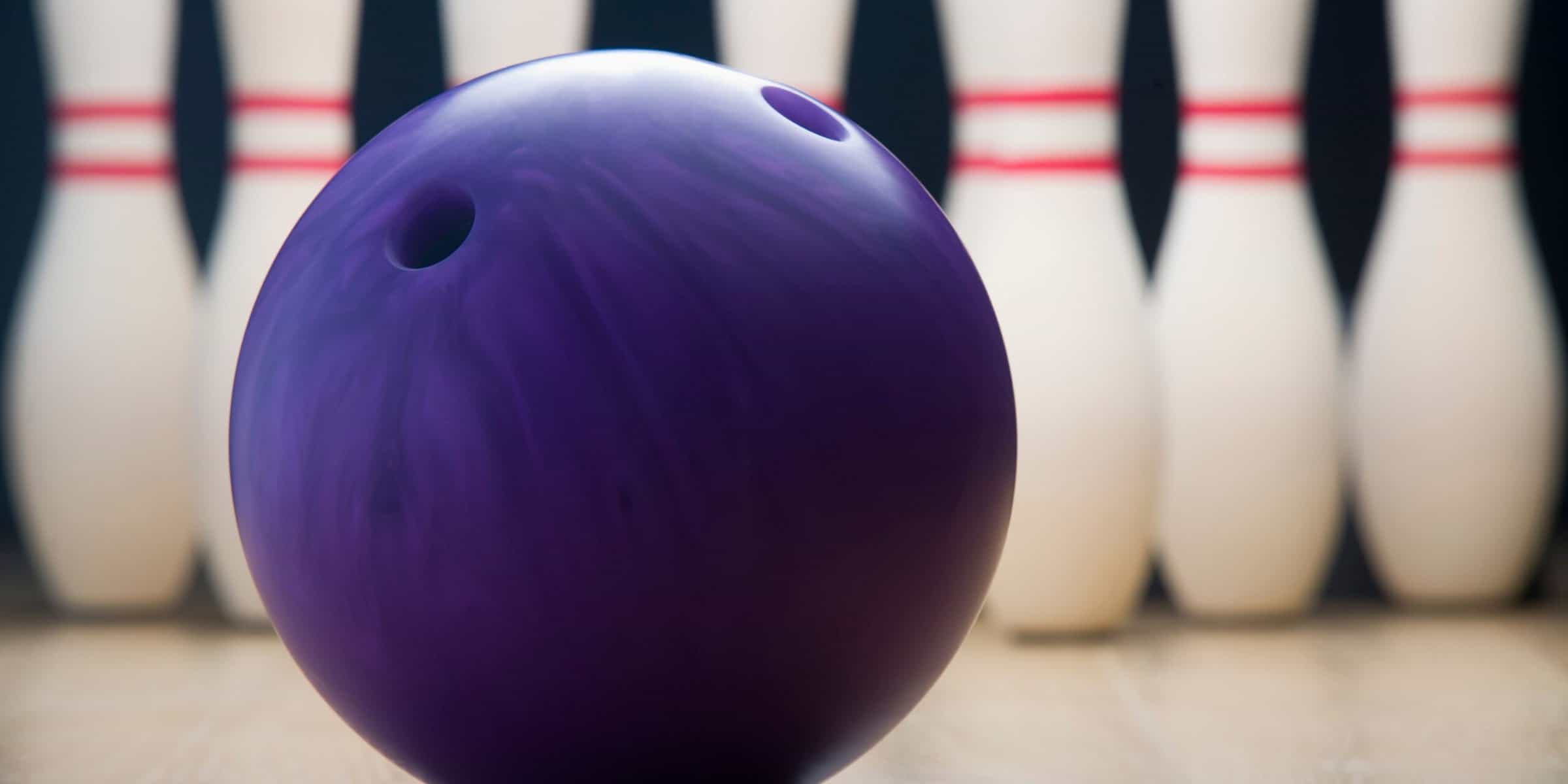

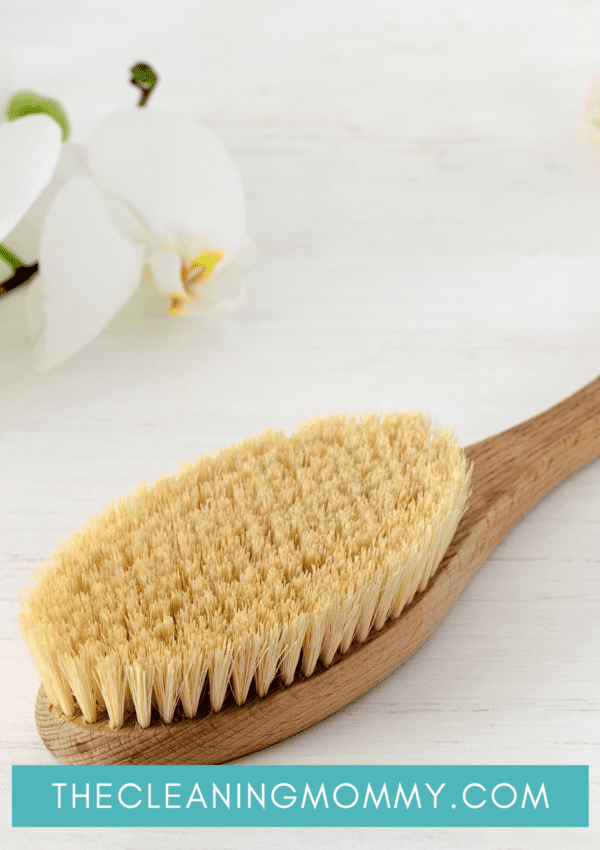

Leave a Reply